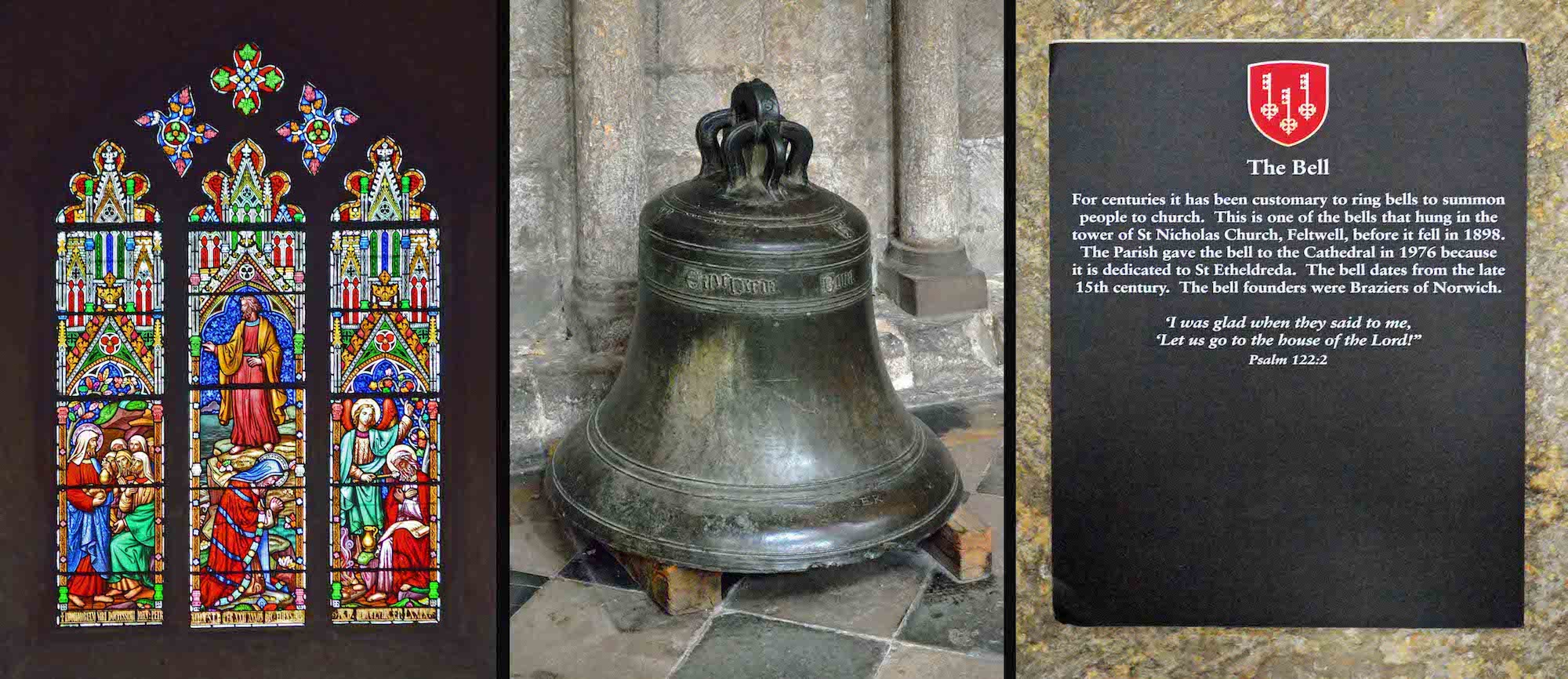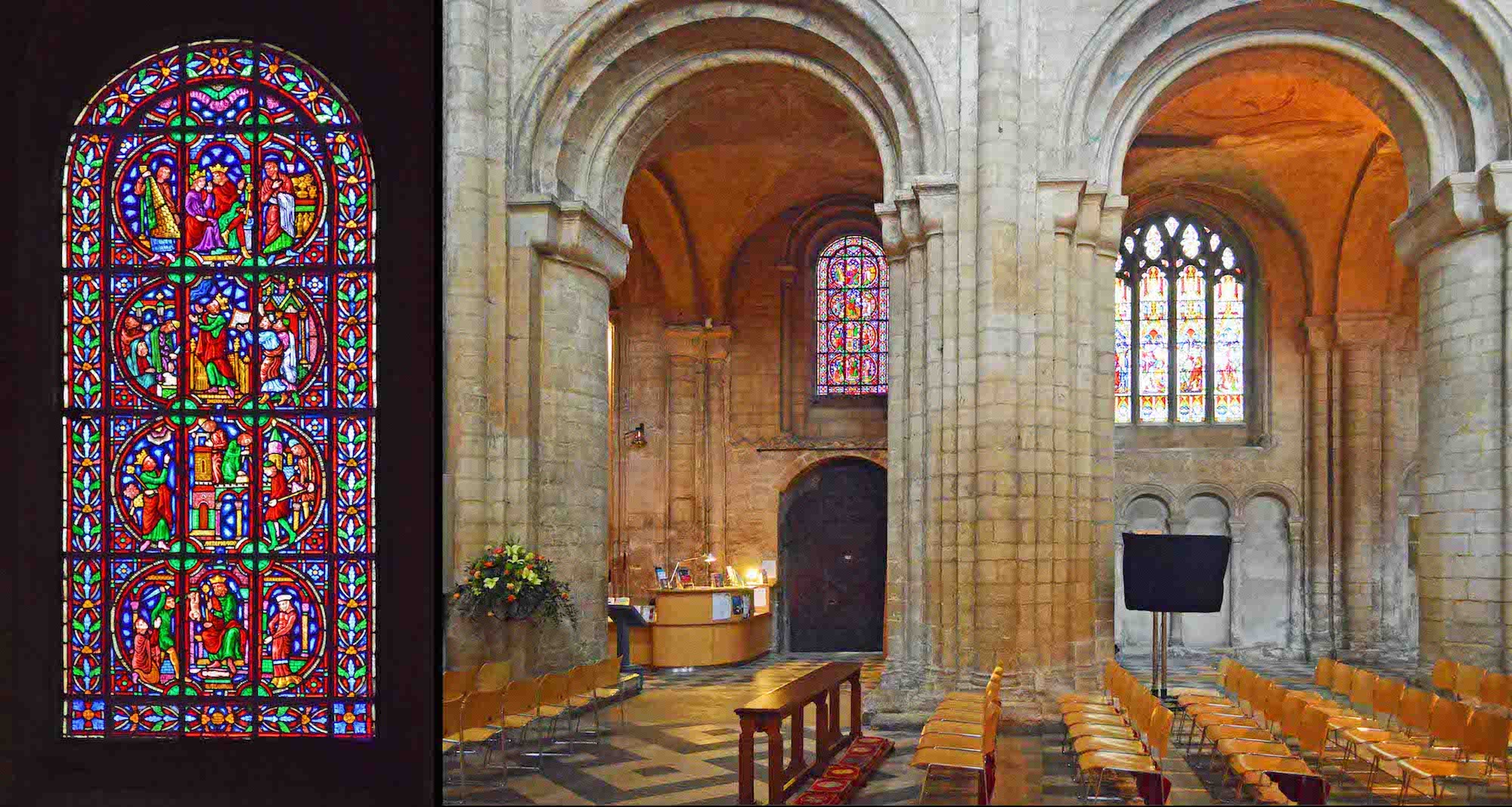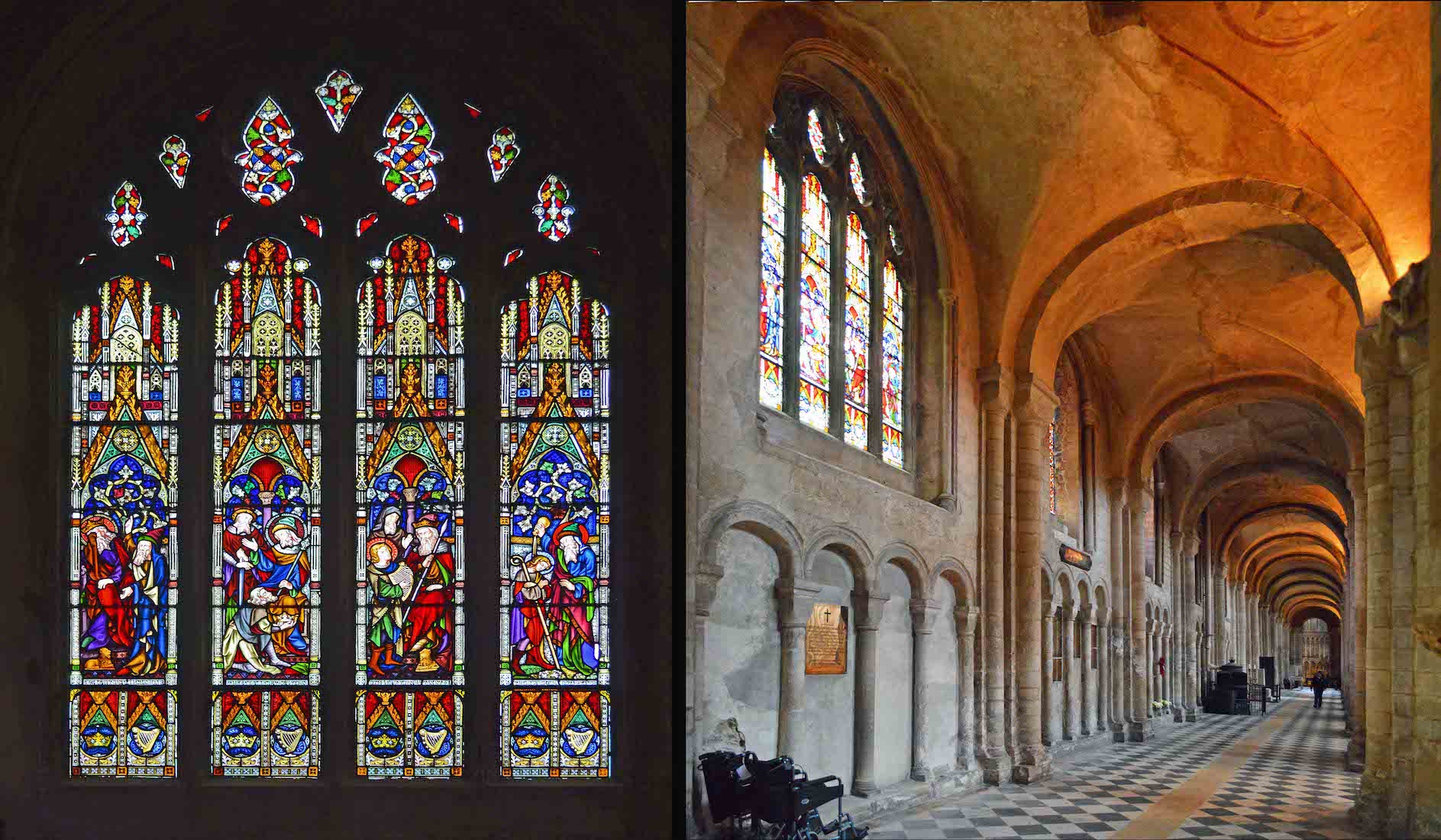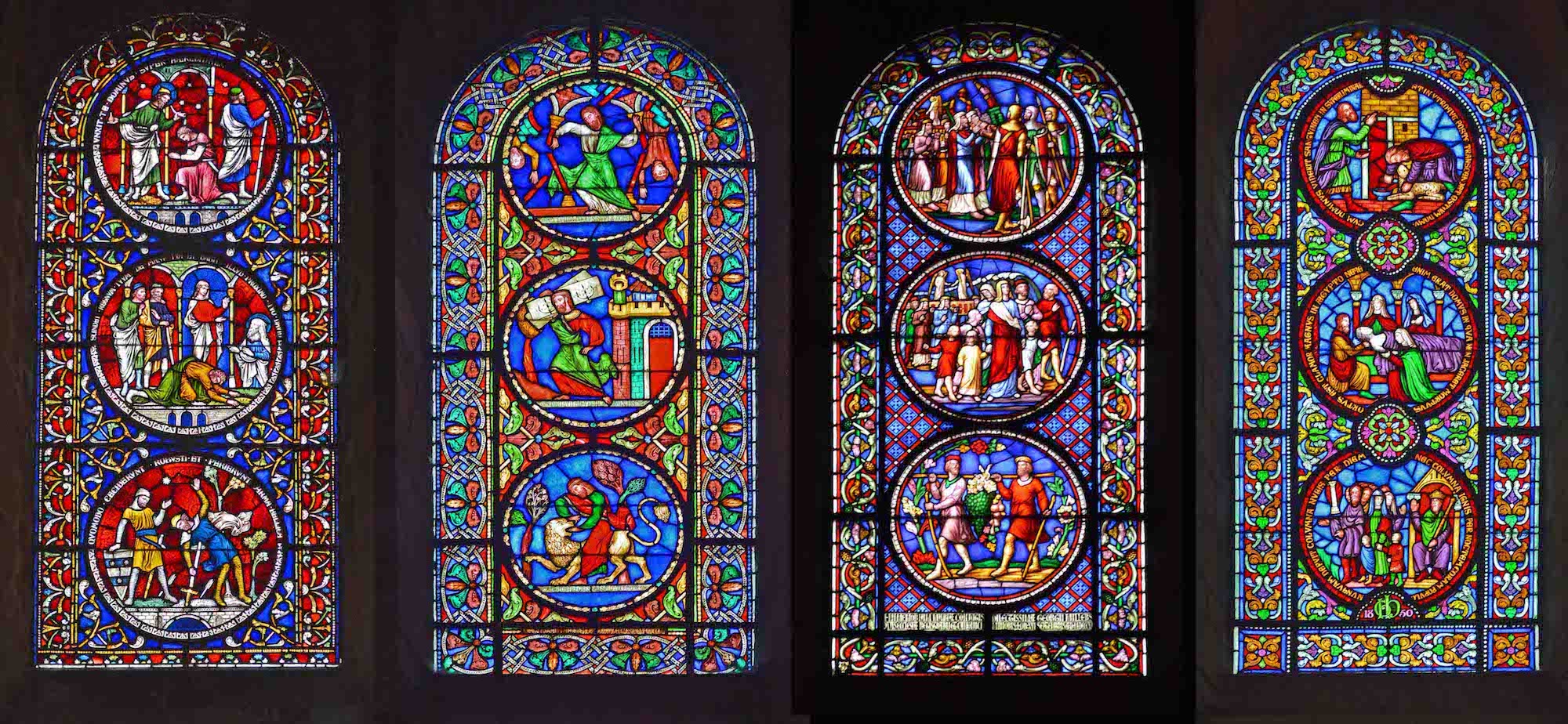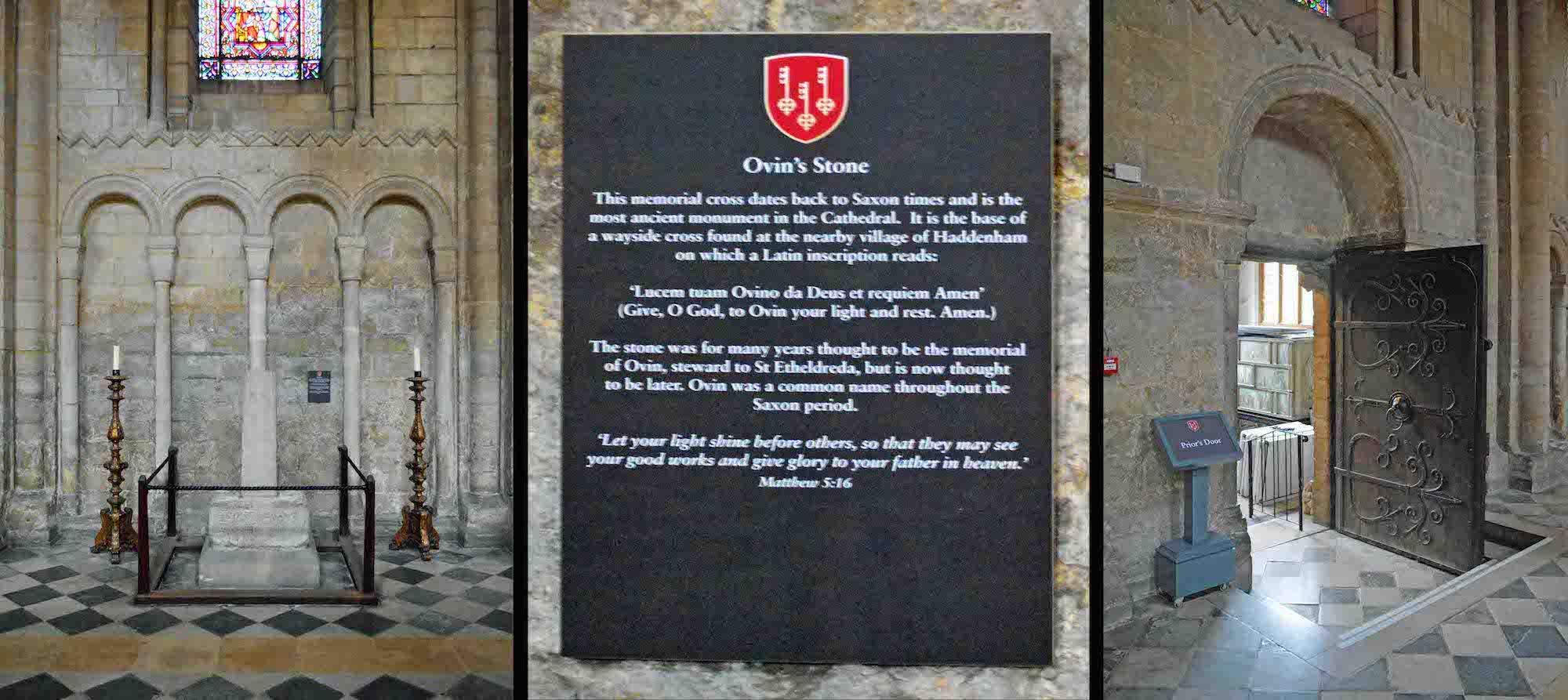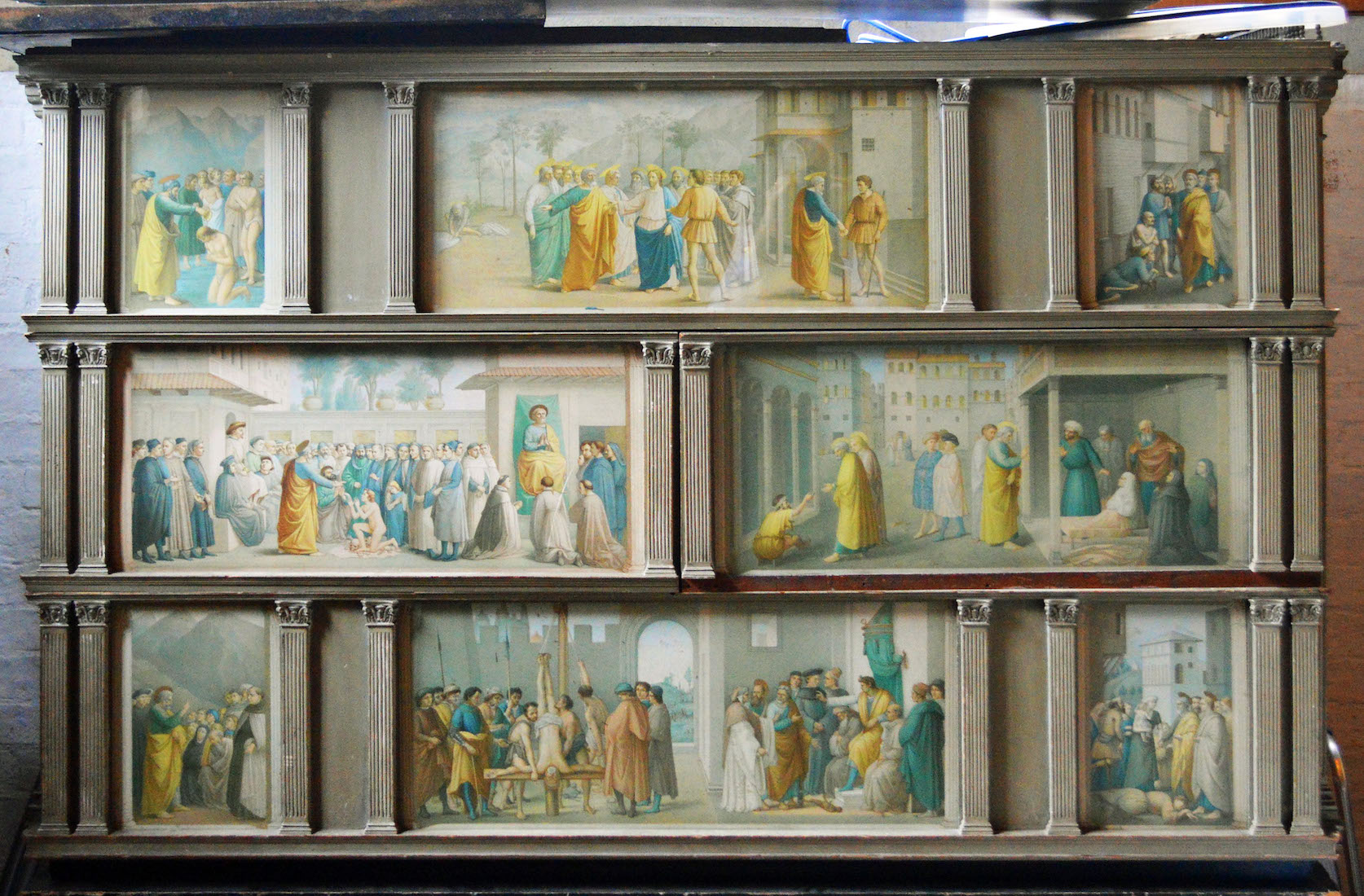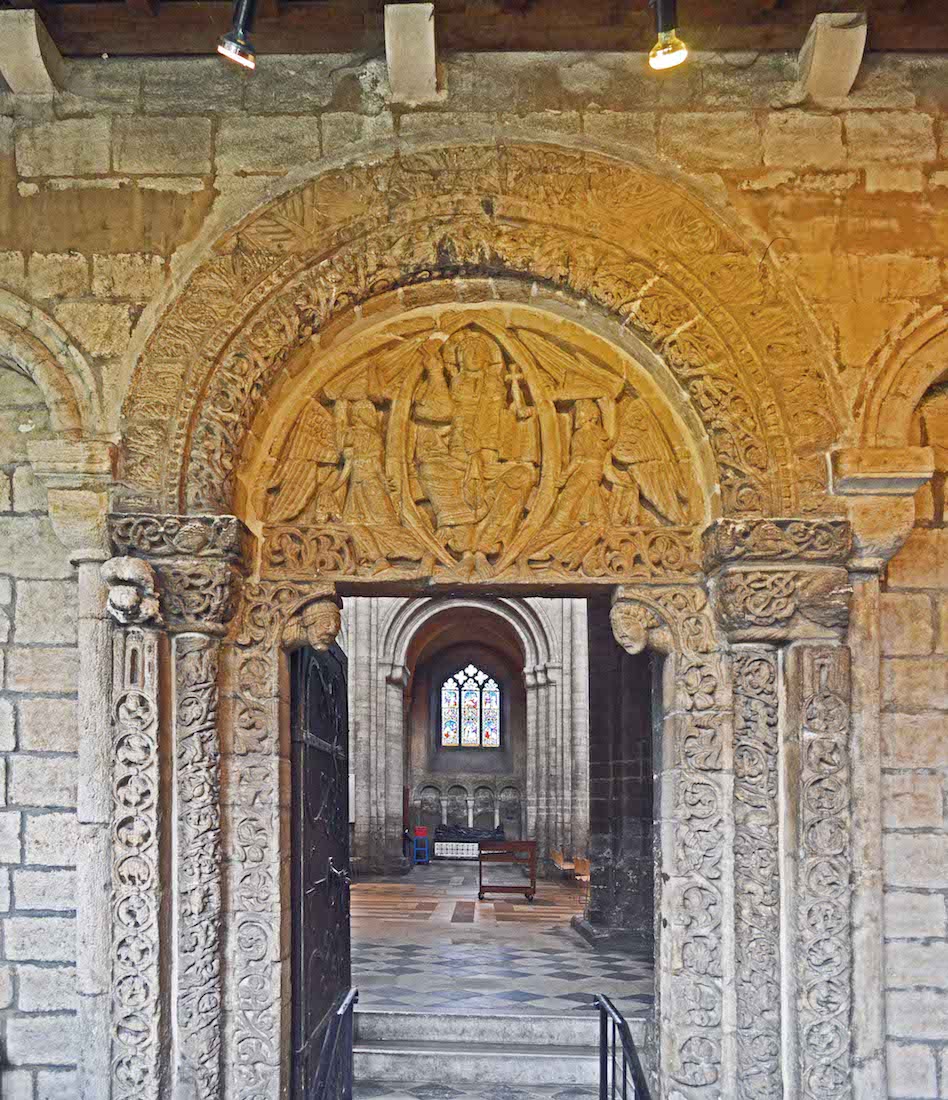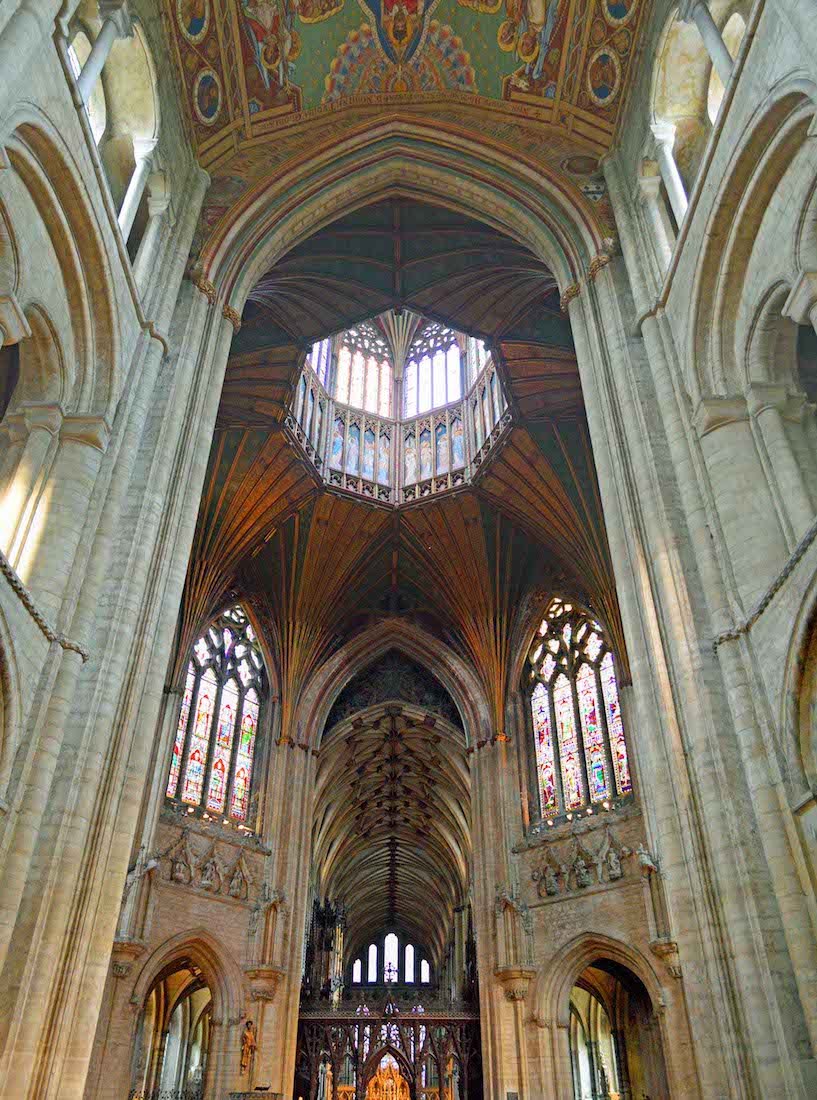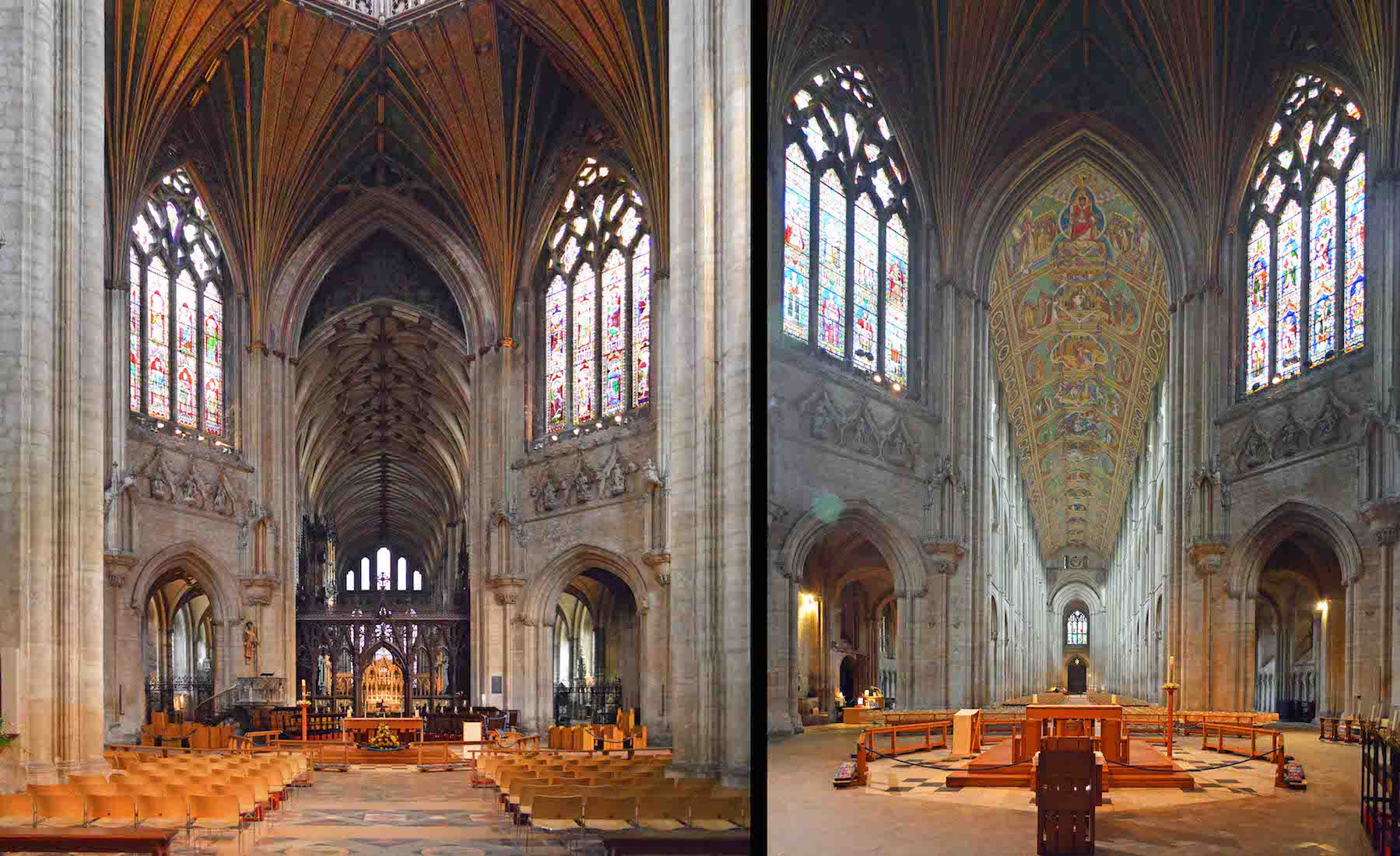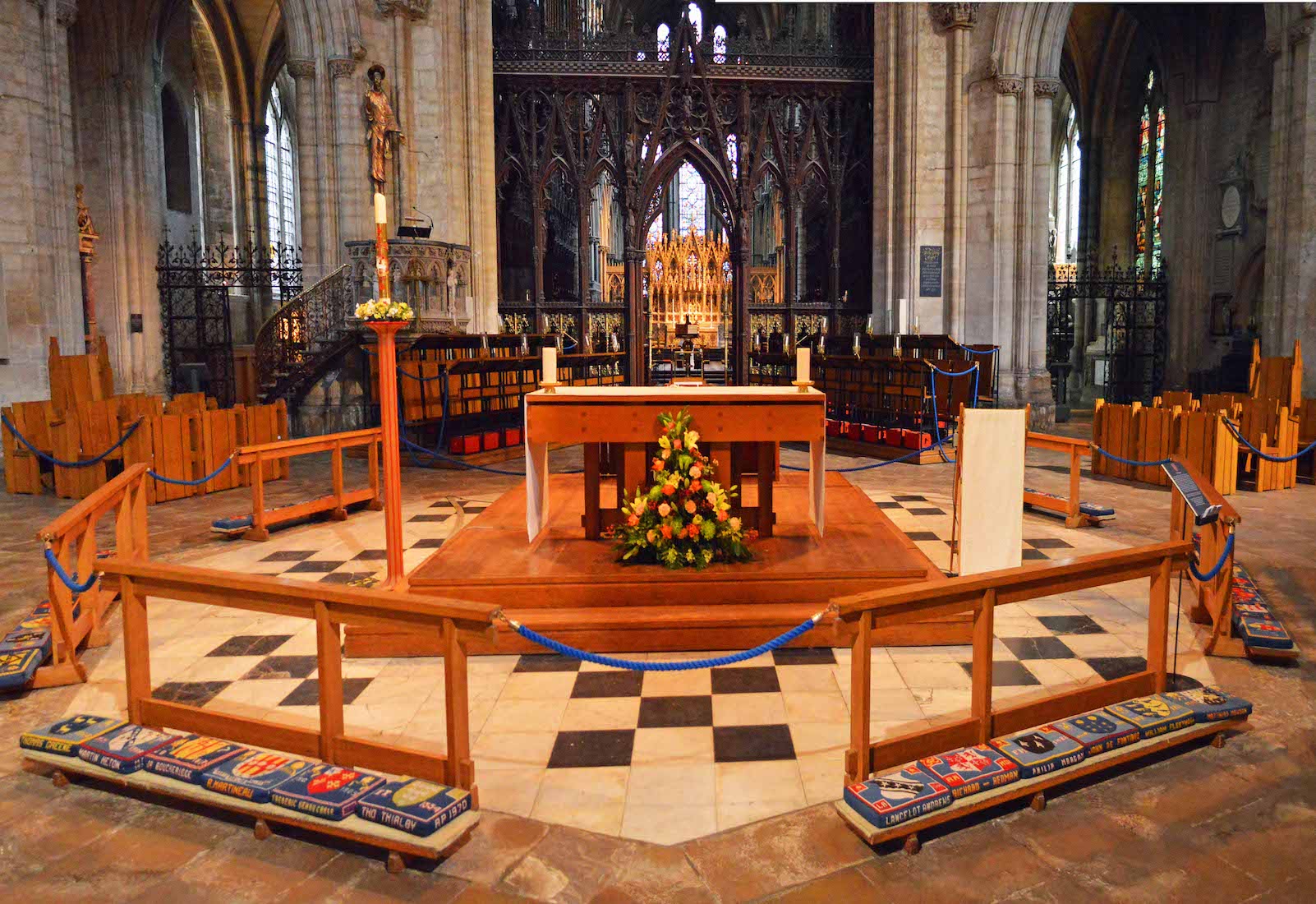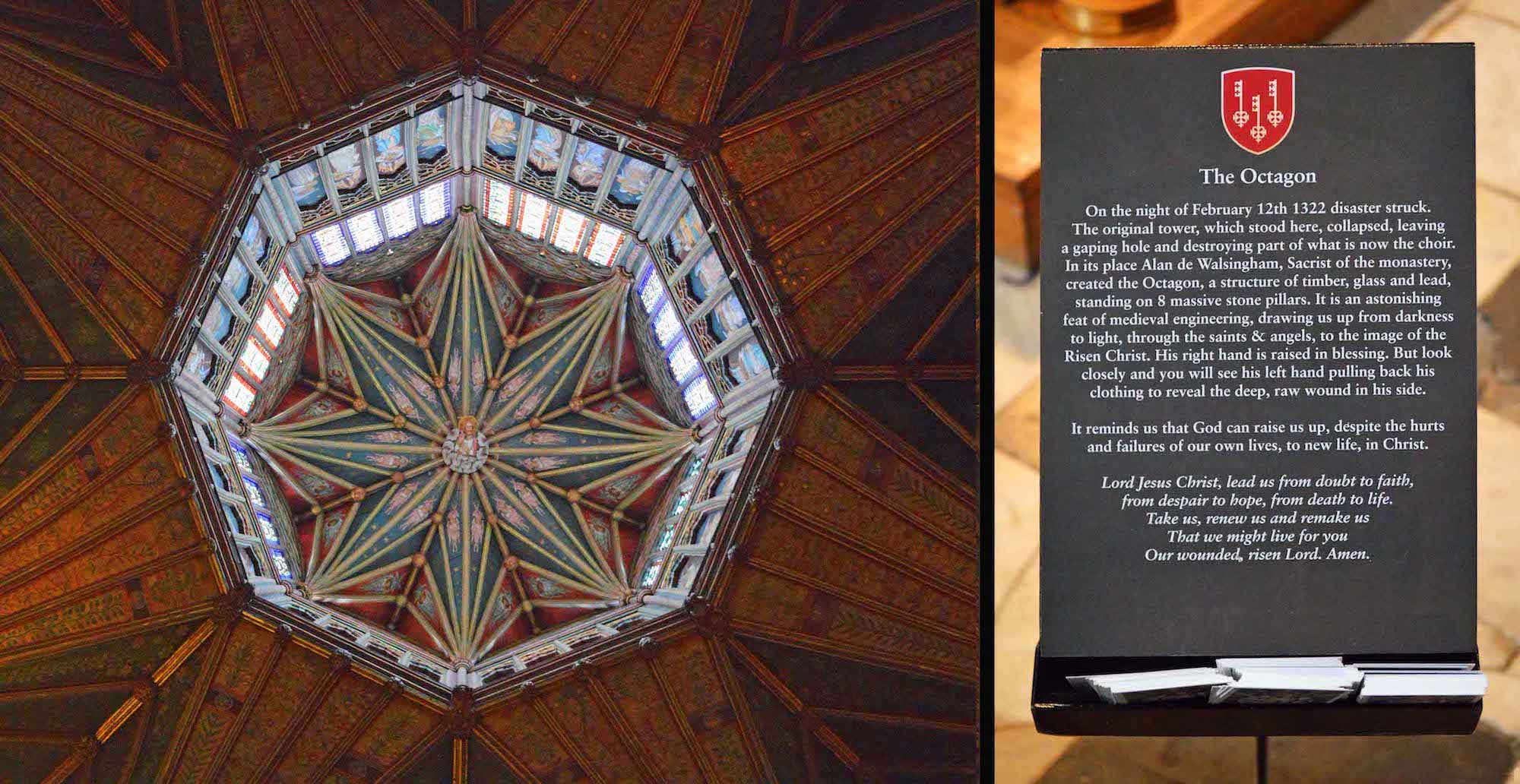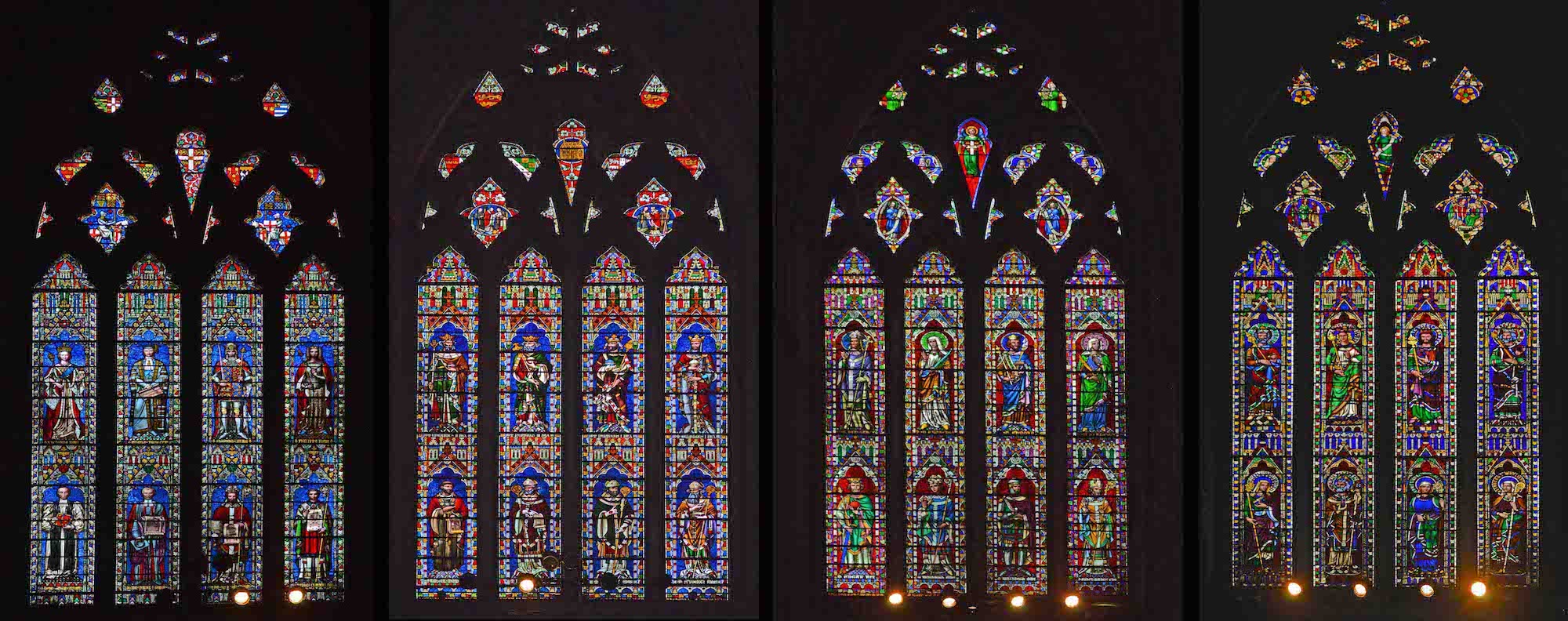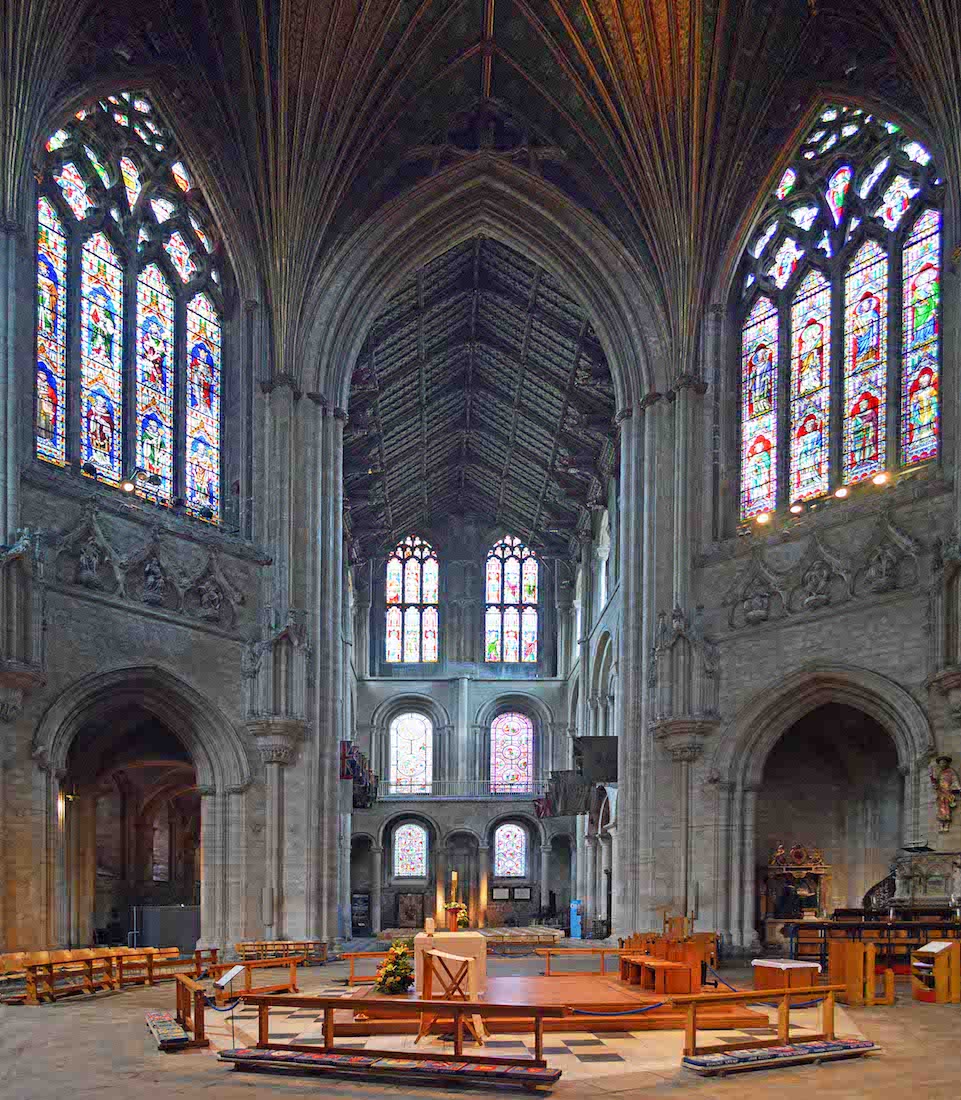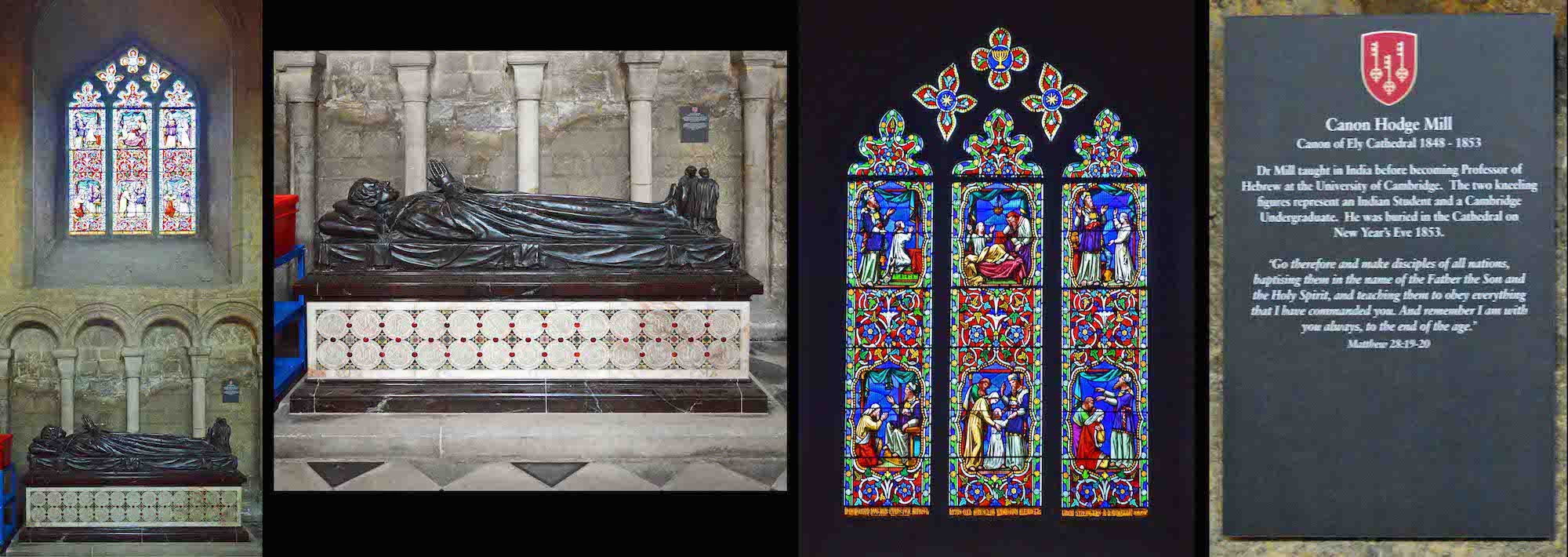
Beneath is an effigy of Canon Hodge Mill. William Hodge Mill (1792–1853) was an English churchman and orientalist, the first principal of Bishop’s College, Calcutta and later Regius Professor of Hebrew at Cambridge. We follow down the North nave aisle, coming to the fifth window. The window is about Samuel. churchman and orientalist, the first principal of Bishop’s College, Calcutta and later Regius Professor of Hebrew at Cambridge. . PLAN
42. THE NORTH NAVE AISLE
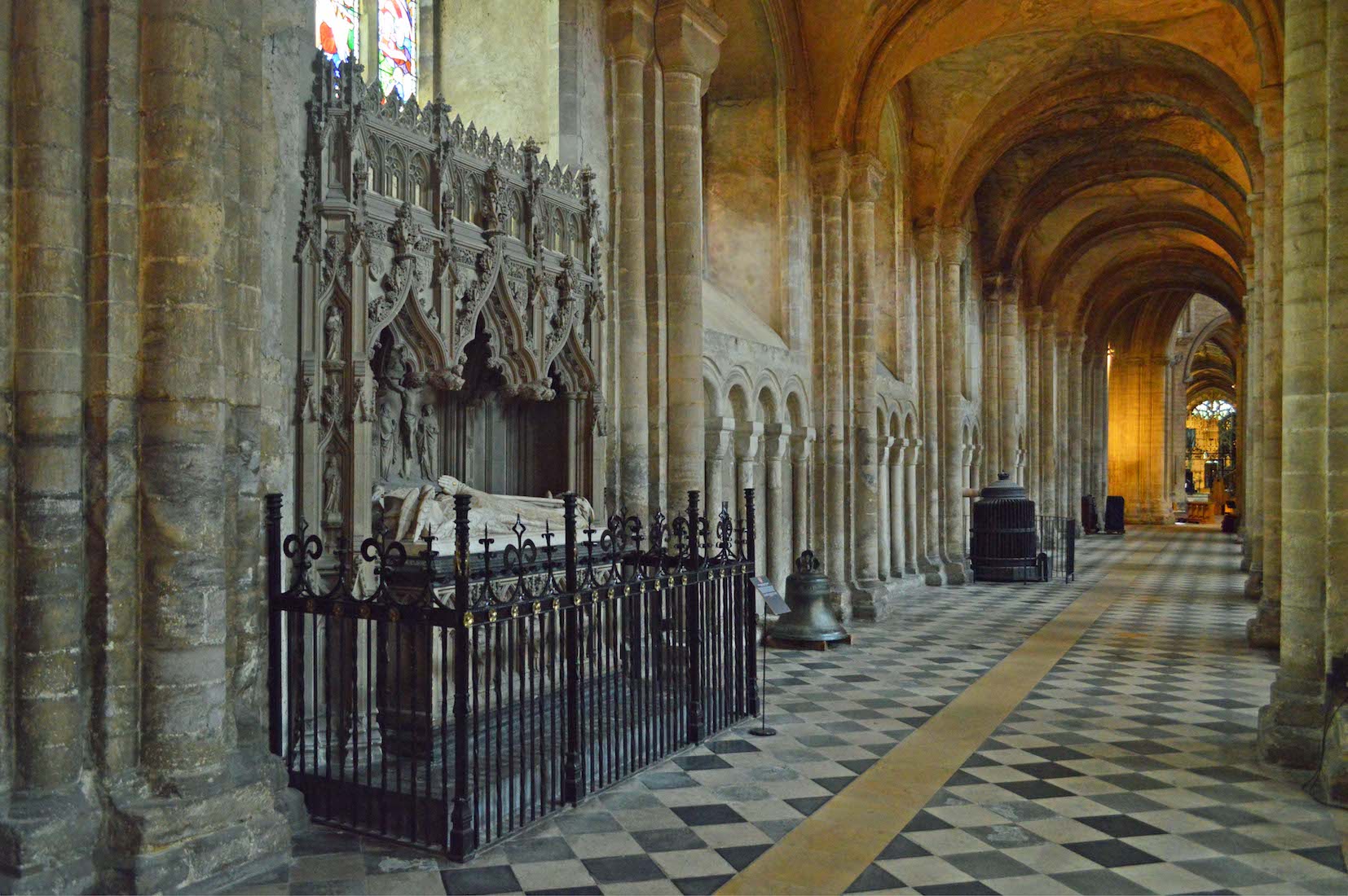
This is a reconnoitering view down the North aisle! There is another effigy, a bell, and then a lot of space. There are more windows, of course.
43. BISHOP WOODFORD EFFIGY
The theme of the sixth window is King David and his minstrels. Beneath is an effigy of Bishop Woodford. James Russell Woodford lived from 30 April 1820 to 21 October 1885. He was an English churchman, and Bishop of Ely from 1873. He was recognized for his preaching, active on behalf of the poor, and involved in church restoration, including work on Ely Cathedral.
44. BELL
The seventh window shows scenes from the life of Elijah. Below the window is this large bell. The bell tower of St. Nicholas Church, Feltwell collapsed on 25/10/1898. In 1967/68, Bell No. 4 (The Etheldreda Bell) was presented to Ely Cathedral, where it stands in a place of honour. Saint Etheldreda, also known as St. Audrey, was an East Anglian princess, who having married twice, gave up married life to take religious vows. She founded the Monastery of Ely and died in A.D. 679.
45. FIVE MORE NORTH NAVE WINDOWS
The final five windows along the North nave aisle are shown here. Their themes are (from left): Elijah and the ravens; Elisha; Hezekiah; Jonah; and Daniel. These are all well known Old Testament characters. Elijah and Elisha were prophets, King Hezekiah turned people back to God and prayed for deliverance from the Assyrians, Jonah ran away rather than go to Nineveh and was swallowed by a great fish, Daniel escaped the lions’ den. These are all teaching windows.
46. ACROSS THE NAVE
We now cross the nave, and work our way back up the South nave aisle. The Eastern-most window depicts the life of Solomon. It is placed above the South door, also known as the Monks’ Door, and leads into what remains of the South cloister.
47. SECOND WINDOW AND SOUTH AISLE
With these windows we now work backwards through a section of the Old Testament story: this window has scenes from the life of David. Looking Westwards along the aisle we notice more stained glass windows, various plaques and brass plates on the wall, and some sort of a shrine just beyond the far heater.
48. WINDOWS THREE TO SIX
The themes of the next four windows are: Saul; Samson; The Walls of Jericho; the Passover and Exodus. In the old days, many members of the congregation could not read – more especially in a ‘foreign’ language – so these windows were a great source of Bible teaching.
49. SOUTH WALL PLAQUES
These are the plaques under Windows 3–5. The plaques below the two windows at left remember men who lost their lives in battle. In particular, the long vertical plaque at centre is to the glory of God and in memory of the men of the Isle of Ely who lost their lives in the War in S. Africa 1899 – 1902. The plaques at right commemorate people who have given service to the Cathedral.
50. REMAINING FIVE WINDOWS
There are five more windows along this South aisle: Windows 7 – 11. There is one window less on this side because of the Southwest transept. From left, the themes of these windows are: Abraham and Angels, Hagar, Isaac blessing Jacob; The Tower of Babel; The Annunciation, Visitation and Nativity; Noah; The Creation, Adam and Eve, Cain and Abel.
51. OVIN’S STONE AND PRIOR’S DOOR
This memorial cross to Ovin, steward to St. Etheldreda, dates back to Saxon times and is the most ancient monument in the Cathedral. The Latin inscription on the base of the stone reads: ‘Lucem tuam Ovino da Deus et requiem Amen’ which means ‘Give, O God, to Ovin, your light and rest. Amen’. The twelfth-century carved doorway at right connected the Cathedral to the medieval cloister. It now leads to a small enclosed area.
52. THROUGH THE PRIOR’S DOOR
Through the door, the arcade on the South wall, now bricked up, would originally have been open, and it was later glazed in the same way as the South Porch is today. This screen is on the East wall. The inverted cross, and the fact that the original church at Ely was the Church of St Etheldreda and St Peter, suggest that these are scenes from the life of St Peter.
53. ABOVE THE PRIOR’S DOOR
We return to the nave. The central carving above the door, which is believed to date from 1135, shows Christ enthroned in majesty. His right hand is raised in blessing, and his left hand holds the Book with the Seven Seals, the record of good and evil deeds. Around the doorway some of the carvings depict the signs of the Zodiac, a reminder that this was the gate of heaven. The almond-shaped frame around Jesus, known as a ‘mandorla’, symbolises new life and hope held out to all who pass through this door.
54. OCTAGON
We next walk to the front of the nave where the famous octagon is located, directly above the crossing. The octagonal design is such a successful design feature, it is a wonder it is not seen more often in other churches. Here, the pillars of the Nave originally continued through what is now an open space. Disaster struck on 22 February 1322, when the Norman central tower collapsed. The noise was so great that the monks thought there had been an earthquake.
55. EAST AND WEST VIEWS
These are the views we have when we stand close to the crossing, and look East and west. Light for the crossing area comes of course from the lantern above, but also from the four large angled windows on the surrounding walls.
56. THE NAVE ALTAR
Like many cathedrals, Ely Cathedral has two altars: the high altar seen in the distance here, and the central nave altar from where weekly services are celebrated. The octagonal theme is continued with the attractive setting, and we notice too the Paschal candle, and the decorated kneelers around outside the rail.
57. THE LANTERN
After the collapse of the old Norman tower, firmer foundations were found further out from the original pillars, and from this evolved the idea of building an octagon surmounted by a lantern. Its width of 74 feet (23m) was too great to support a stone vault, and so it was built in wood and covered in lead. The Octagon's internal height is 142 feet (43m), and its total weight is 400 tons. A masterpiece of medieval engineering, it took 18 years to build. In the centre John of Burwell (a village south-east of Ely) carved Christ in majesty, ruling over all..
58. TOWER WINDOWS
These detailed windows depict (from left): Queen Victoria, Prince Albert, Edward III, Queen Phillipa; Edward II, Henry III, Henry I, William I; Archbishop Dunstan, St Withburga, St Edmund, St Werburga; KIng Anna, St Etheldreda as Queen of Northumbria, Tondbehrt, Ecgfrith.
59. NAVE ALTAR KNEELERS
The decorated kneelers along the altar rail depict the names and coats of arms of various Cathedral bishops. There is often a date too, signifying the date of appointment as Bishop. For example, Philip Mogan (should be Morgan!), 1426.
60. NORTH TRANSEPT
We now turn our attention to the North transept. We observe here the 15th century hammer-beam roof with its flying angels, the Northern wall with six large windows, and various hanging flags and regimental colours. Also of interest are the three seated figures below each tower window. The arch at left leads through to open transept space. We shall find a couple of small chapels to the East (right).



